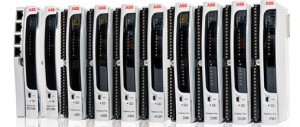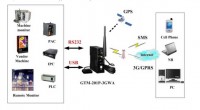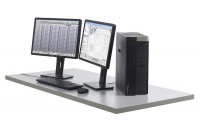 ABB, the leading power and automation technology group, today launched its Symphony® Plus SD Series of flexible control and input/output (I/O) products, which offer total plant automation across application types, irrespective of size or physical location. They will be showcased at ABB’s Automation and Power World event in Houston, Texas, from March 2-5.
ABB, the leading power and automation technology group, today launched its Symphony® Plus SD Series of flexible control and input/output (I/O) products, which offer total plant automation across application types, irrespective of size or physical location. They will be showcased at ABB’s Automation and Power World event in Houston, Texas, from March 2-5.
The SD Series is designed to improve energy efficiency and productivity in diverse operating environments within the power and water industries. The new range is especially suited for applications where control is distributed over a wide area often in harsh conditions, such as wind and solar power plants as well as water facilities.
The new portfolio is the latest addition to the Symphony Plus product family, ABB’s flagship automation platform for the power generation and water sectors and the most widely used distributed control system (DCS) in these industries.
“The launch of the SD series is a reaffirmation of ABB’s commitment to continue investing in the Symphony Plus platform based on an ‘evolution without obsolescence’ approach of introducing new technology with enhanced benefits while protecting the long-term investment by ensuring full compatibility with existing installations,” said Massimo Danieli, Managing Director of ABB’s Power Generation business, a part of the company’s Power Systems division.
SD Series is a portfolio of DIN rail-mounted control and I/O products based on a scalable architecture, flexible design and field-proven technology. The energy-efficient solution pays for itself through reduced long-term energy, operational and maintenance costs. Furthermore, they can withstand extreme operating conditions such as temperatures from -20 to +70 degrees Celsius without the need for additional environmental protection. This significantly reduces their footprint and maintenance costs, and improves reliability and performance thanks to fewer components.
Symphony Plus enables plants and personnel to perform efficiently and balance objectives like asset availability, operational reliability and production efficiency with business goals like asset life extension, carbon reduction and regulatory compliance.
Nike
 ABB, the leading power and automation technology group, has signed a strategic alliance with Ericsson, a global leader in mobile telecommunications, to provide an end-to-end automation platform that optimizes physical and virtual resources for data centers and cloud operators.
ABB, the leading power and automation technology group, has signed a strategic alliance with Ericsson, a global leader in mobile telecommunications, to provide an end-to-end automation platform that optimizes physical and virtual resources for data centers and cloud operators. Small PLCs, that do not have an integrated network interface, can easily be connected to fieldbus and industrial Ethernet networks via their RS-232 interface and the Anybus Communicator.
Small PLCs, that do not have an integrated network interface, can easily be connected to fieldbus and industrial Ethernet networks via their RS-232 interface and the Anybus Communicator. The GTM-201-3GWA is an industrial Tri-band 3G WCDMA cellular modem with RS-232 and USB interfaces working on frequencies of Tri-band WCDMA 2100/1900/850 MHz, and Quad-band GSM 850/900/1800/1900 MHz. The modem which supports up to 7.2Mbps downlink speed and 5.76Mbps uplink speed services can utilize the 3G/GSM/GPRS network for convenient and inexpensive data transfer from remote instruments, meters, computers or control systems in either live data or packet data. The GTM-201-3GWA enables internet connection over 3G, when 3G service is available. It automatically selects 3G or GPRS continue to work.
The GTM-201-3GWA is an industrial Tri-band 3G WCDMA cellular modem with RS-232 and USB interfaces working on frequencies of Tri-band WCDMA 2100/1900/850 MHz, and Quad-band GSM 850/900/1800/1900 MHz. The modem which supports up to 7.2Mbps downlink speed and 5.76Mbps uplink speed services can utilize the 3G/GSM/GPRS network for convenient and inexpensive data transfer from remote instruments, meters, computers or control systems in either live data or packet data. The GTM-201-3GWA enables internet connection over 3G, when 3G service is available. It automatically selects 3G or GPRS continue to work. Emerson Process Management has introduced the Smart Wireless Navigator, a new software platform that enables users with large wireless deployments to maximize the power of their wireless networks. The Navigator brings together Smart Wireless tools for planning, managing, and maintaining networks. Valuable wireless network and device diagnostics and data are organized in an intuitive interface, along with the wireless tools, to streamline the Smart Wireless experience.
Emerson Process Management has introduced the Smart Wireless Navigator, a new software platform that enables users with large wireless deployments to maximize the power of their wireless networks. The Navigator brings together Smart Wireless tools for planning, managing, and maintaining networks. Valuable wireless network and device diagnostics and data are organized in an intuitive interface, along with the wireless tools, to streamline the Smart Wireless experience.